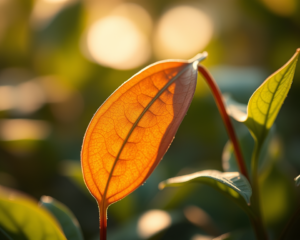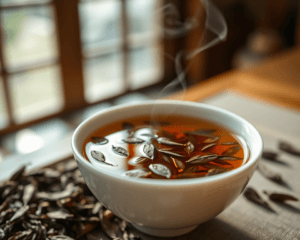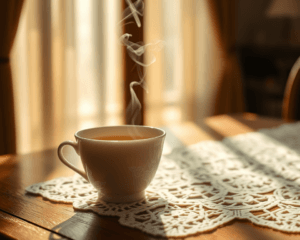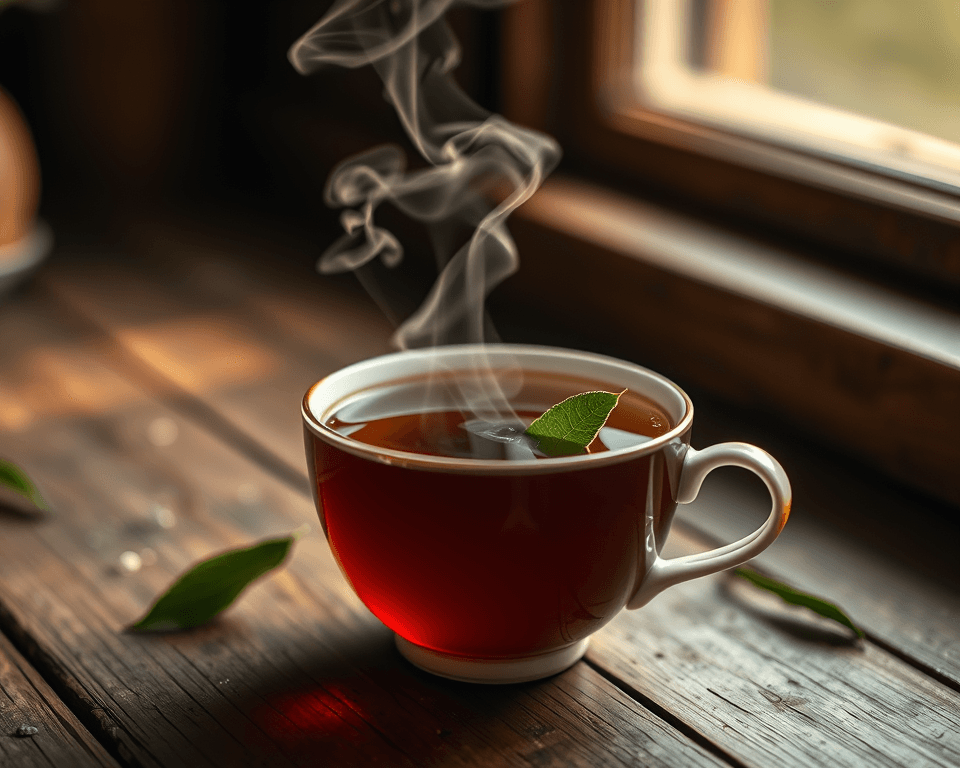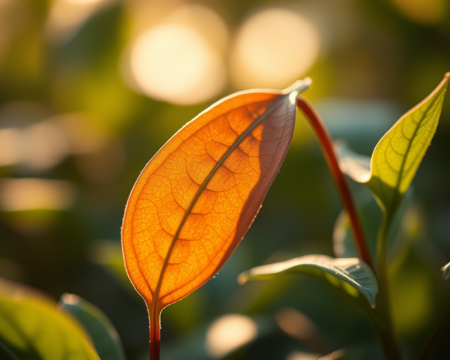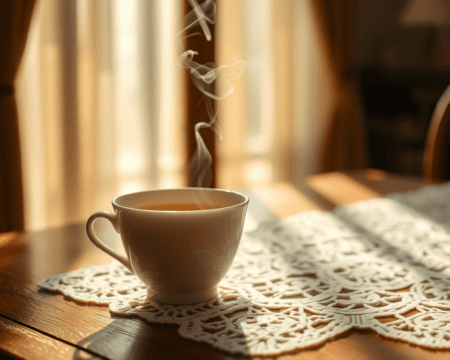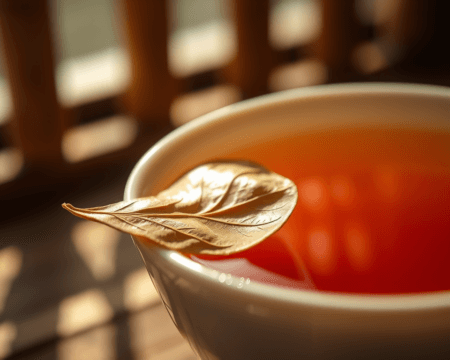Ever sipped on a cup of dark tea and thought, “What’s the deal with this unique brew?” You’re not alone. Dark tea is a powerhouse of flavor and health benefits that can elevate your tea game to a whole new level. It’s different from your usual green or black teas—it’s fermented, has its distinct characteristics, and it’s steeped in rich culture. So, buckle up, because we’re about to explore what makes dark tea special, its various types, the benefits you can reap, and how to brew it perfectly.
Key Takeaways
- Dark tea stands apart from green and black teas due to its unique fermentation process.
- Popular types include pu-erh, aged tea, ripe tea, and raw tea, each with distinct flavors and characteristics.
- The health benefits of dark tea are backed by research, highlighting its antioxidant properties.
- Brewing dark tea requires special techniques, which significantly impact flavor and enjoyment.
What is Dark Tea?
Definition and Characteristics
Let’s kick things off with the basics: what is dark tea? In simple terms, it’s a unique type of fermented tea. Unlike its green and black counterparts, dark tea undergoes an extensive fermentation and aging process that sets it apart.
You might be asking, “What’s the big deal about fermentation?” Well, it turns out that this process not only affects the flavor but also amps up the tea’s health benefits. Dark tea boasts rich flavors and a complex profile that’s often described as earthy, smooth, and satisfying. The unique fermentation gives it a broader range of characteristics—different notes, colors, and aromas—that can literally transport you to a different time and place with every sip.
Comparison with Other Tea Types
Now, let’s break down how dark tea stacks up against green and black tea. If dark tea is a wizard of flavor, green tea is your health guru, and black tea is the bold, traditional favorite.
Dark Tea vs. Green Tea: Green tea is all about fresh, vegetal flavors with minimal processing. It’s great for detoxing, but it doesn’t have the same depth of flavor as dark tea. With dark tea, you get a symphony of flavors, thanks to the aging process.
Dark Tea vs. Black Tea: Black tea is oxidized, giving it a strong, robust flavor. On the other hand, dark tea is fermented, leading to a mellow and complex profile. The aroma and taste can be a roller coaster ride—from grassy notes to deep woodsy flavors.
Comparing them, dark tea emerges as a meditative experience—perfect for those moments when you want to unwind and reflect.
Varieties of Dark Tea
Popular Types of Dark Tea
If you’re ready to explore the different ways to enjoy dark tea, let’s dig into the most popular varieties out there. Trust me, once you find the right one, it can become your go-to staple.
Pu-erh Tea: The rockstar of dark teas. It’s aged, often for years, which gives it a rich, deep flavor that’s hard to replicate. There are two types—raw (sheng) and ripe (shou). Raw pu-erh has a younger taste, while ripe pu-erh is smoother and deeply earthy.
Aged Tea: Similar to pu-erh, but usually refers to any dark tea that has matured over time, enhancing its flavor complexities. Think of it like fine wine—it’s better with age.
Ripe Tea & Raw Tea: Ripe tea is fully fermented and ready to drink right away, while raw tea is a bit fresher and can develop its flavors over time. They provide different experiences, so don’t be afraid to try both!
Each type has a signature taste and aroma, often rich, earthy, and sometimes a bit sweet.
Regional Variations and Cultural Significance
Let’s not ignore the cultural side of dark tea. Where you sip matters just as much as what you sip. In China, dark tea isn’t just a drink; it’s a ritual wrapped in history. Different regions have their unique takes, and the stories behind them are often as rich as the brews themselves.
For instance, in Yunnan, where pu-erh originates, tea drinking is a highly regarded tradition. It’s not just about the tea; it’s about bringing people together. You’ll likely hear folk tales that breathe life and history into your cup. Embracing these cultural nuances will changer how you appreciate dark tea.
Health Benefits of Dark Tea
Nutritional Profile and Health Effects
Now let’s get to the juicy part—the health benefits! Dark tea is packed with antioxidants and flavonoids, which are excellent for overall wellness. It’s like nature’s secret weapon against some health issues.
Research has shown that drinking dark tea can potentially aid digestion, help manage weight, and even promote heart health. The fermentation process enhances its beneficial compounds, like polyphenols, giving you a solid reason to make it a part of your daily routine.
Scientific Research and Studies
When it comes to dark tea, the research backs up its health claims. Studies have indicated that regular consumption can lead to improved cholesterol levels and better gut health. Imagine drinking your way to wellness while enjoying a fantastic cup of tea. Sounds good, right?
Recent clinical research has validated health claims and connected tea consumption to lower risks of chronic diseases. Always remember, though: enjoy it as part of a balanced lifestyle, not as a magic cure-all.
Brewing Dark Tea
Traditional Brewing Methods
Here’s where it gets fun—brewing dark tea! If you thought the taste was incredible, wait until you taste it brewed the right way. Embrace the traditional brewing techniques like the gongfu tea ceremony. It’s not just about making tea; it’s about creating an experience.
Whether you’re using a clay teapot or a glass gaiwan, pay attention to the water temperature and steeping times. For pu-erh, keep your water just below boiling—around 200°F—and steep it for about 30 seconds. Then, go for another steep; each time, you’ll unlock different layers of flavor.
Tips for Enjoying Dark Tea
Here’s where I drop some insider tips. First off, don’t rush the brewing process—allow the tea to steep properly for the best results. Next, consider the serving temperature; a slight chill can bring out different flavors. And remember, it’s all about enjoying the experience.
You’ll find that the flavor profiles can change dramatically with each steep, leading to a more rewarding experience. It’s like unlocking levels in a video game; the better you get at brewing, the more delightful flavors you discover.
Dark tea isn’t just another drink—it’s an experience steeped in culture and health benefits. As you explore various types like pu-erh and aged tea, you’ll not only find new flavors but also help your body along the way. So grab your favorite dark tea, brew it up using the traditional methods, and discover the depth of this flavorful tradition. Cheers to your dark tea journey!
Frequently Asked Questions
What is dark tea, and how is it different from other types of tea?
Dark tea is characterized by its unique fermentation process, setting it apart from green and black teas. While green tea is unoxidized and black tea is fully oxidized, dark tea undergoes a specific fermentation that changes its flavor profile and complexity, often resulting in earthy and rich tastes.
What are the health benefits of dark tea?
Dark tea is rich in antioxidants, which can help combat oxidative stress in the body. Research suggests potential benefits such as improved digestion, reduced cholesterol levels, and anti-inflammatory properties. Regular consumption may contribute to overall well-being, but it’s advisable to enjoy it in moderation.
How do I brew dark tea correctly?
Brewing dark tea involves using hotter water (around 200°F/93°C) and longer steeping times compared to other teas. Start with a short steep and gradually increase the time for subsequent brews. Using a teapot or a Gaiwan can enhance the brewing experience and flavor extraction significantly.
What are the main types of dark tea, and how do they differ?
The main types of dark tea include pu-erh, aged tea, ripe tea, and raw tea. Pu-erh is known for its deep flavors and probiotic properties; aged tea offers complex, mellow tastes; ripe tea is fermented to achieve a smooth profile; raw tea is less processed, retaining more of the tea’s original characteristics.
Can dark tea be consumed in the evening?
Yes, dark tea can be consumed in the evening, although some varieties contain caffeine. If you’re sensitive to caffeine, it’s wise to choose low-caffeine options or limit your intake before bedtime to ensure a good night’s sleep.
How should I store dark tea to maintain its quality?
To preserve the quality of dark tea, store it in a cool, dry place away from light and humidity. Use airtight containers to prevent moisture absorption and preserve its flavor profile. Avoid storing it in the fridge, as that can create condensation.
Is dark tea suitable for beginners?
Absolutely! While dark tea has strong flavors, there are many mild varieties available. Beginners might want to start with ripe pu-erh tea, which is generally smoother and more approachable. Experimenting with different types can help you discover your preferences.
How does the fermentation process of dark tea affect its flavor?
The fermentation process transforms the raw tea leaves, leading to a wide range of flavors from earthy and woody to fruity and sweet. Over time, these flavors mature, contributing to the tea’s depth and complexity. Each type of dark tea offers a unique taste experience based on its processing.
Can I reuse dark tea leaves?
Yes, dark tea leaves can often be reused multiple times. Each steeping will produce different flavor notes, so you might discover new layers with each brew. Adjust the steeping time and temperature based on your taste preference and the specific type of dark tea being used.
